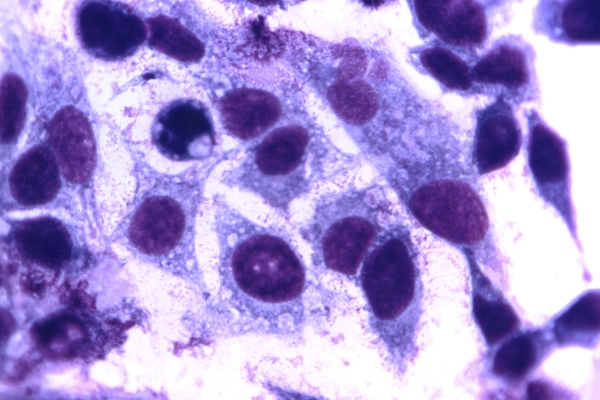No one wants to be sick. People want to get well. They want a cure, better yet, a quick fix, and that’s why people get desperate. When the going gets tough, that can make them turn to sources that may not be less than trustworthy. That’s where stem cell clinics come into play.
The Allure of Stem Cell Therapy
A quick Google search will show you that stem cell therapy will cure what ails you, whether it’s COPD, heart failure, muscular dystrophy, or even Parkinson’s disease. A quick look on PubMed, the go-to resource for medical literature, however, will show you that most of these therapies don’t work.
I have to admit it sounds good though. After all, stem cells have the potential to develop into any cell in the body. In theory, you take a sick cell and replace it with a healthy cell not exposed to the disease. Using your own body’s stem cells to do that for you, well, it brings a whole new meaning to “heal thyself”. There are even a handful of FDA-approved stem cell therapies out there to treat people with blood or immune system disorders, even hematologic cancers.
The trick is getting stem cells that will do the job. Only embryonic stem cells are truly pluripotent, meaning that they can become any type of cell. Adult stem cells are already destined to be a certain type of tissue, i.e., bone, fat, muscle, or nerves. Stem cell clinics have to develop techniques to turn your adult cells (usually fat cells) into usable stem cells. Let’s say that the science isn’t quite there yet, at least not reliably so.
The Cost of Stem Cell Therapy
The problem is that the majority of stem cell therapies are not FDA-approved, and they can get quite expensive. Insurance companies sure aren’t going to fork up thousands of dollars for treatments that are unproven. Instead, people are being bilked out of thousands of their own hard-earned dollars, even mortgaging houses and spending their life savings, to chase an impossible dream.
Stem cell clinics will post “studies” to support their claims but when you look closer, they are poorly designed or have a small number of participants. They share testimonials about people who are “cured”, but this is little more than lip service if they do not give you hard and fast numbers, i.e., how many people did they treat, how many people responded to treatment (and in what way), and how many people had bad outcomes. Get the cold hard facts before you spend a dime. Stem cell therapy could cost you more than money.
The Physical Harms of Stem Cell Therapy
People are risking their health to chase after unproven “cures”. A case study in the New England Journal of Medicine describes three women in Florida that lost their vision while another case report notes a Massachusetts man who became paralyzed after stem cell treatment. Just because you are using cells from your own body does not make treatment safe. Don’t forget your cells likely got you into this problem in the first place. Not to mention that the science to turn your cells into usable stem cells is experimental at best.
Thankfully, the FDA started to crack down on them. The FDA issued a warning letter in 2017 to U.S. Stem Cell Clinic LLC, of Weston, Florida, and U.S. Stem Cell Inc., of Sunrise, Florida regarding concerns about their clinical practices and the U.S. Justice Department brought a suit against them in 2018. A federal court ultimately placed a permanent injunction against the Florida stem cell clinics in 2019. Since then, the FDA issued warnings in 2021 and 2022 against “regenerative treatments” for COVID and a number of other conditions.
Disturbingly, a 2019 study in JAMA found that nearly two-thirds of the 700 stem cell clinics assessed were run by physicians that were not trained in the specialties related to the services they provided. How is that safe?
What You Can Do
You will first want to see if the stem cell treatment is FDA-approved for the specific condition it claims to treat. If not FDA-approved, you will want to find out if the treatment is at least part of a clinical trial that has been vetted by the FDA. The FDA has stringent rules when it comes to investigational new drugs and that’s exactly what these stem cells are. These cells are manipulated and injected back into your body as a treatment. They act like any other medication.
Meeting FDA standards for clinical safety, quality manufacturing, and ethical practices is a step in the right direction. Mind you, that does not mean the treatment will actually work. Quite frankly, I would walk away from any treatment that does not involve the FDA. The science is just too new and experimental right now, and there are too many bad players out there trying to take advantage of vulnerable people for a quick buck. Don’t let advertisements and hype sway you. You deserve better.
References
Fu, W., Smith, C., Turner, L., Fojtik, J., Pacyna, J. E., & Master, Z. (2019). Characteristics and scope of training of clinicians participating in the U.S. direct-to-consumer marketplace for unproven stem cell interventions. JAMA, 321(24), 2463. https://doi.org/10.1001/jama.2019.5837
Kuriyan, A. E., Albini, T. A., Townsend, J. H., Rodriguez, M., Pandya, H. K., Leonard, R. E., Parrott, M. B., Rosenfeld, P. J., Flynn, H. W., & Goldberg, J. L. (2017). Vision loss after intravitreal injection of autologous “stem cells” for amd. New England Journal of Medicine, 376(11), 1047–1053. https://doi.org/10.1056/NEJMoa1609583
Marks, P. W., Witten, C. M., & Califf, R. M. (2017). Clarifying stem-cell therapy’s benefits and risks. New England Journal of Medicine, 376(11), 1007–1009. https://doi.org/10.1056/NEJMp1613723


Leave a Reply